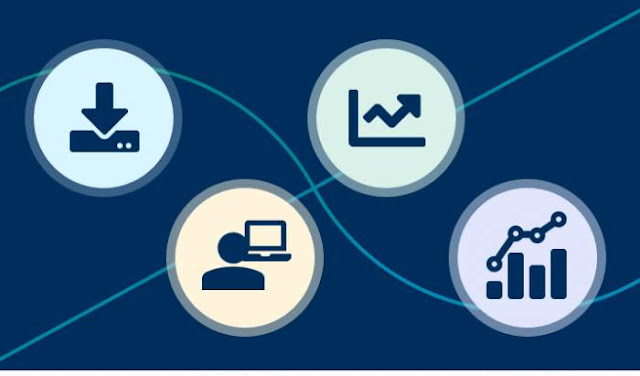What factors affect data accuracy?
Data accuracy is a critical aspect of information management and decision-making in various fields, including business, science, healthcare, and more. Inaccurate data can lead to flawed analyses, misguided decisions, and, in some cases, severe consequences. Several factors can affect data accuracy, and addressing these factors is crucial for maintaining the integrity of data. In this essay, we will explore these factors in detail.
Data Entry Errors:
Data is often entered manually into systems, which makes it
susceptible to human errors. Typos, transposition of numbers or letters, and
other mistakes during data entry can result in inaccurate data. To mitigate
this, organizations use data validation techniques and employ well-trained
personnel to minimize errors.
Incomplete Data:
Data can be incomplete due to missing information, causing
gaps in the dataset. This incompleteness can result from several reasons,
including survey non-responses, data collection constraints, or data not being
recorded. Incomplete data can lead to biased conclusions and hinder
comprehensive analysis.
Outdated Data:
Over time, data can become outdated, especially in fields
where information changes rapidly. Using outdated data can lead to incorrect
conclusions and decisions. Regular updates and validation are necessary to
ensure that data remains accurate and relevant.
Data Integration Challenges:
In organizations, data is often collected and stored in multiple
systems and formats. Integrating data from diverse sources can be complex, and
mismatches in data integration can introduce inaccuracies. Data integration
strategies and tools are essential for ensuring accurate data fusion.
Data Format and Structure:
Inconsistent data formats and structures can create problems
when attempting to analyze or manipulate data. Differences in date formats,
measurement units, and naming conventions can lead to errors. Standardization
and data quality control processes are crucial for maintaining data accuracy.
Data Duplication:
Duplicate records can creep into datasets, leading to errors
in analyses. Identifying and eliminating duplicates is a vital step in
maintaining data accuracy. Deduplication tools and processes are commonly used
to address this issue.
Data Cleaning and Transformation:
Raw data often requires cleaning and transformation to make
it suitable for analysis. Incorrect or incomplete cleaning and transformation
processes can introduce inaccuracies. This emphasizes the importance of
well-defined data preprocessing steps.
Biases and Subjectivity:
Data can be influenced by biases in the data collection
process. For example, sampling bias can lead to skewed results, and the way
questions are framed in surveys can introduce subjectivity. Addressing biases
and being transparent about them is essential for data accuracy.
Data Security:
Data breaches and unauthorized access can compromise data
accuracy. When unauthorized parties manipulate data, the integrity of the dataset
is compromised. Robust data security measures are essential to protect data
from tampering.
Data Quality Control:
The absence of data quality control processes can lead to
inaccuracies. It is essential to establish quality control measures, including
data validation, to detect and rectify errors in the data.
Data Storage and Retrieval Issues:
Data storage and retrieval systems must be reliable. Data
corruption during storage or retrieval processes can result in inaccuracies.
Regular backups and maintenance are necessary to prevent such issues.
Data Governance:
Without proper data governance, organizations may lack a
clear structure for data management and oversight. This can lead to data
inaccuracies due to inconsistent handling and decision-making processes.
Technological Failures:
Hardware or software failures can lead to data inaccuracies.
Data can be corrupted during storage, transfer, or processing due to technical
glitches. Redundancy, monitoring, and timely repairs are essential to address
these issues.
Human Error in Analysis:
Even after collecting and storing data accurately, errors
can occur during the analysis phase. Misinterpretation of data or improper
application of statistical methods can lead to erroneous conclusions.
External Factors:
External factors, such as changes in market conditions,
environmental variables, or social dynamics, can affect the accuracy of data.
Failing to account for these changes can lead to inaccuracies in predictions
and analyses.
Software Bugs and Updates:
Data management software can have bugs that affect data
accuracy. Regular software updates may introduce unexpected changes to data
processing, which can disrupt data accuracy if not managed properly.
Lack of Documentation:
Insufficient documentation of data sources, collection
methods, and transformation processes can hinder data accuracy. Well-documented
data practices and metadata help in understanding and validating data.
Cultural and Ethical Factors:
Cultural and ethical considerations can impact data
accuracy. For example, in cross-cultural studies, differences in
interpretations and responses can lead to inaccuracies.
Overemphasis on Automation:
Overreliance on automated data collection and processing can
lead to errors if not monitored closely. Human oversight is crucial to ensure
that automated processes are functioning as intended.
Legal and Regulatory Compliance:
Failure to comply with data protection laws and regulations
can lead to inaccuracies due to legal consequences. Ensuring compliance with
data protection and privacy regulations is essential.
Data Volumes:
Extremely large datasets can pose challenges for data
accuracy. Managing and processing massive amounts of data may lead to errors if
not handled with the right infrastructure and tools.
Evolving Business Rules:
Changes in business rules, such as pricing models or product
categorization, can introduce inaccuracies if data is not updated to reflect
these changes.
External Data Sources:
Data obtained from external sources can be unreliable.
Relying on such data without proper validation can introduce inaccuracies into
an organization's data.
Conclusion
Data accuracy is a multifaceted challenge that can be
influenced by various factors throughout the data lifecycle, from collection and
storage to analysis and decision-making. Addressing these factors requires a
combination of technical measures, such as data validation and quality control
processes, and organizational practices, such as data governance and
documentation. As the volume and importance of data continue to grow,
maintaining data accuracy remains a critical concern for businesses and
institutions across different sectors. By recognizing and proactively managing
these factors, organizations can ensure the integrity of their data and make
informed, reliable decisions.


Comments
Post a Comment